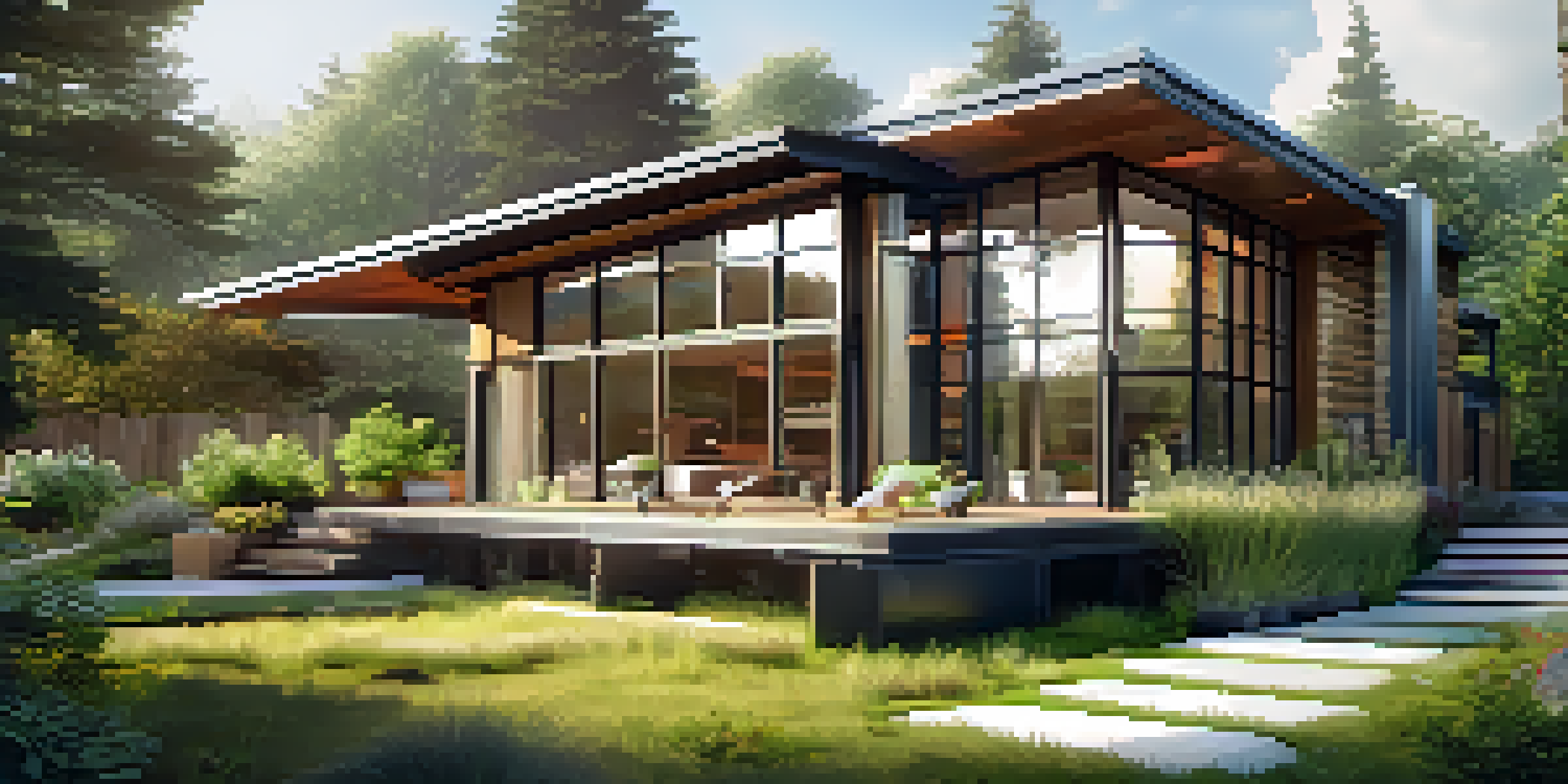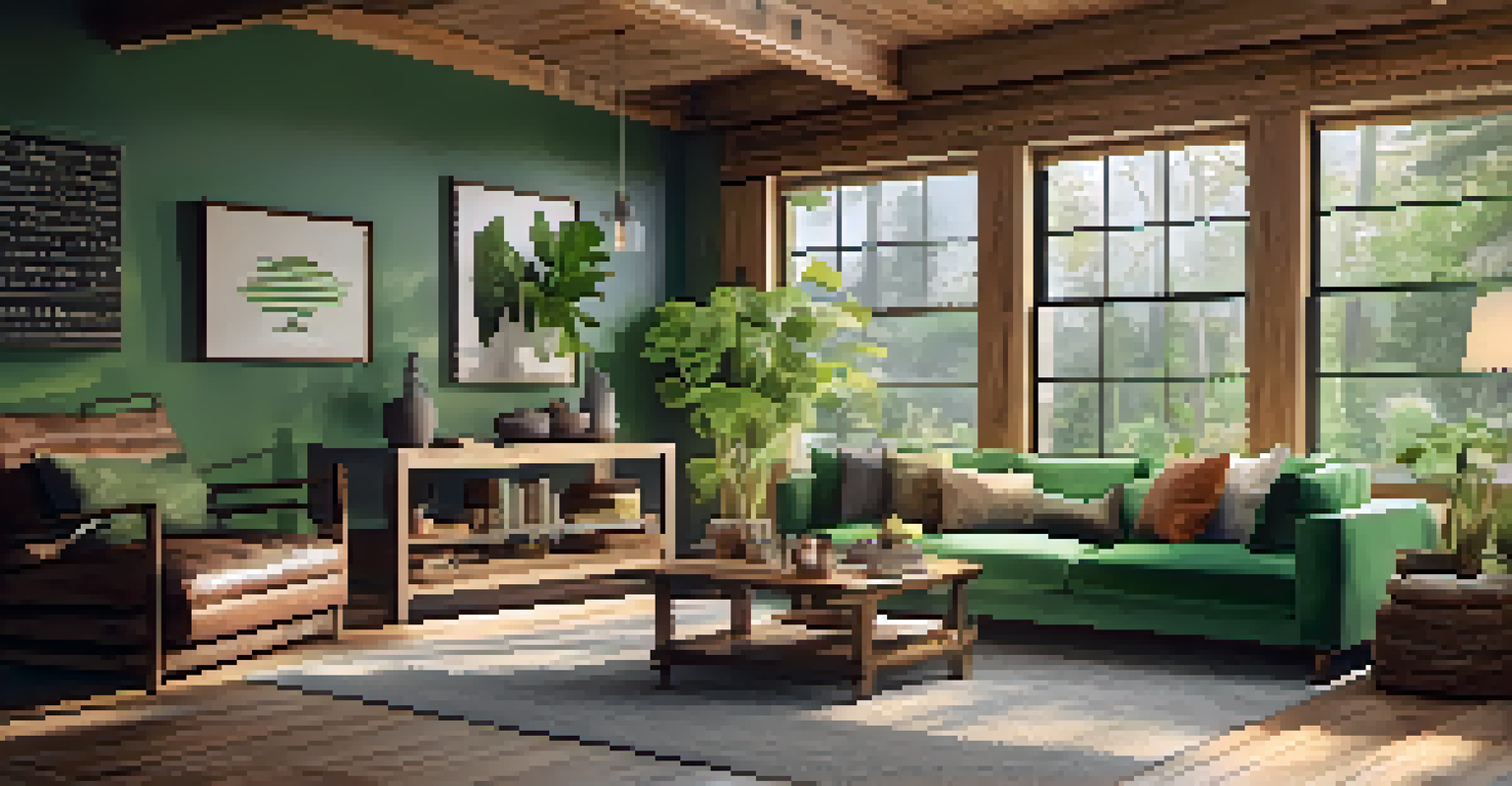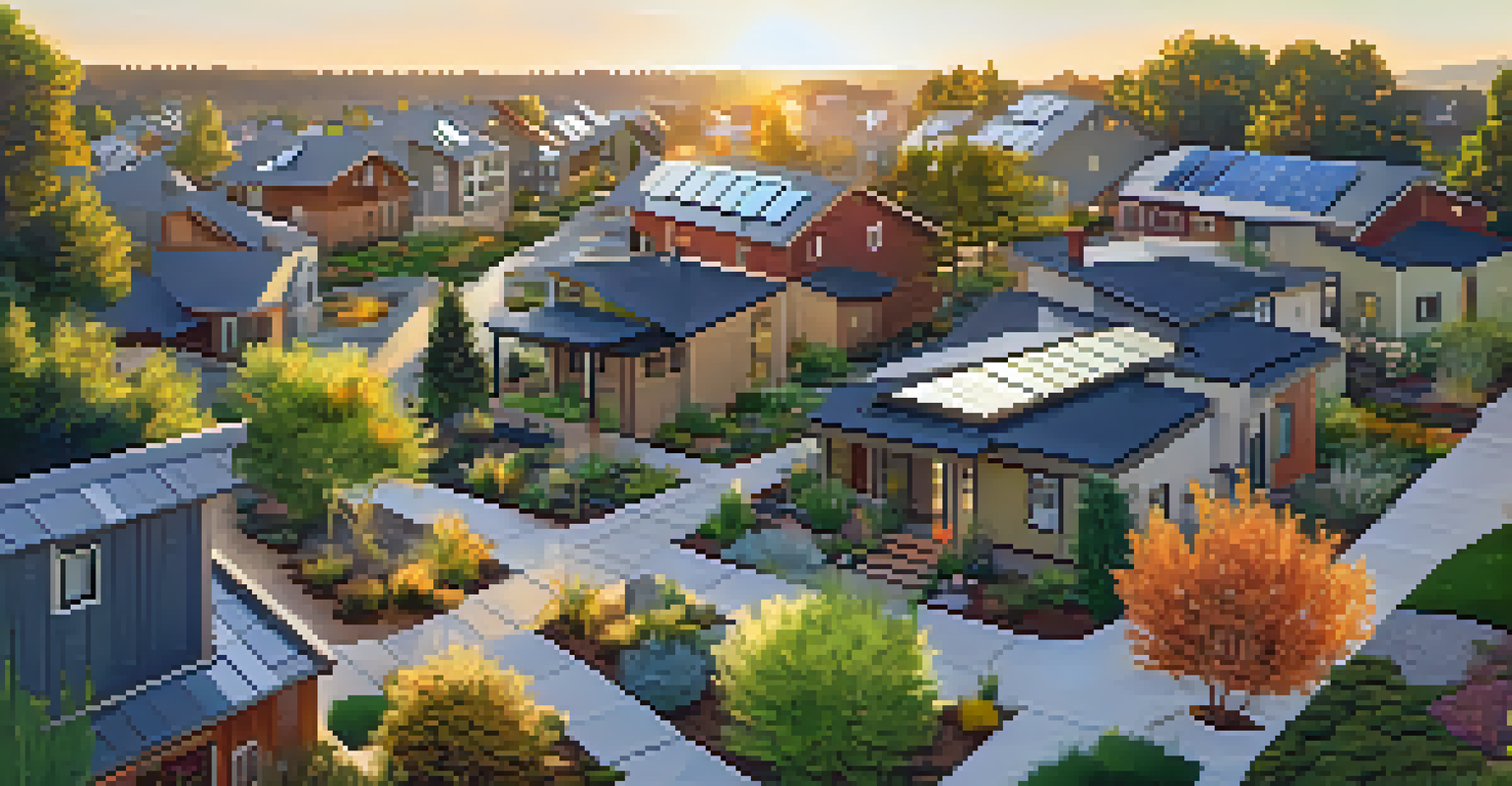The Role of Green Certifications in Home Design

What Are Green Certifications in Home Design?
Green certifications are official recognitions that a home meets specific environmental standards. These standards often focus on energy efficiency, sustainable materials, and overall environmental impact. Think of them as badges of honor for homes that prioritize sustainability.
The greatest threat to our planet is the belief that someone else will save it.
Various organizations offer these certifications, including ENERGY STAR, LEED, and the National Green Building Standard. Each program has its own criteria, but they all aim to promote eco-friendly practices in residential construction. By earning these certifications, homeowners can demonstrate their commitment to a greener lifestyle.
For anyone looking to buy or build a home, understanding these certifications is crucial. They not only signify quality and sustainability but can also influence resale value. Homes with green certifications often attract environmentally conscious buyers who are willing to pay a premium for energy-efficient features.
Benefits of Green Certifications for Homeowners
One of the most significant advantages of green certifications is the potential for reduced utility bills. Homes that meet energy-efficient standards typically consume less energy, leading to substantial savings over time. Imagine receiving lower energy bills while doing your part for the environment—it's a win-win!

In addition to saving money, certified homes often provide a healthier living environment. Many green certifications focus on indoor air quality, encouraging the use of non-toxic materials and better ventilation systems. This means that you and your family can breathe easier and enjoy a healthier lifestyle.
Green Certifications Enhance Value
Homes with green certifications often attract environmentally conscious buyers, potentially increasing resale value.
Moreover, having a green-certified home can increase its marketability. As the demand for sustainable living grows, many buyers actively seek out homes with these certifications. This not only enhances the appeal of your property but can also lead to a quicker sale at a potentially higher price.
Impact of Green Certifications on Home Design Trends
Green certifications have significantly influenced current home design trends, pushing architects and builders to prioritize sustainability. This shift has led to innovative designs that incorporate energy-efficient systems, sustainable materials, and environmentally friendly practices. As a result, modern homes are often more aesthetically pleasing while being kind to the planet.
Sustainability is no longer about doing less harm. It's about doing more good.
For instance, many new homes now feature solar panels and green roofs, which not only reduce energy consumption but also enhance curb appeal. Additionally, open layouts combined with large windows maximize natural light, reducing the need for artificial lighting. This trend reflects a broader commitment to blending functionality with eco-conscious design.
Furthermore, the focus on sustainability encourages the use of reclaimed and recycled materials in home construction. This not only minimizes waste but also adds unique character to homes. Homeowners are increasingly drawn to these innovative designs, showcasing how green certifications are reshaping the future of home design.
How Green Certifications Promote Sustainable Materials
A key aspect of green certifications is the emphasis on sustainable materials, which play a vital role in reducing a home's environmental footprint. These materials often include reclaimed wood, recycled metal, and low-VOC (volatile organic compounds) products. By utilizing such materials, builders can minimize waste and reduce the demand for new resources.
For example, using bamboo as a flooring option is popular due to its rapid renewability. Unlike traditional hardwoods, bamboo grows quickly and can be harvested without harming the ecosystem. This kind of material choice reflects a growing awareness of eco-friendly practices in the home design industry.
Sustainable Materials Reduce Impact
Utilizing sustainable materials like reclaimed wood and bamboo minimizes waste and lowers a home's environmental footprint.
Ultimately, green certifications encourage homeowners to think critically about the materials they choose. By opting for sustainable products, you contribute to a healthier planet while also enjoying the unique aesthetics that these materials can offer. It's a small change that can have a big impact on our environment.
The Process of Obtaining Green Certifications
Obtaining a green certification is a structured process that involves several steps, beginning with an initial assessment of your home or building plans. This assessment determines which certification program aligns best with your goals. It's essential to understand the requirements beforehand to ensure you meet the necessary criteria.
Next, you'll need to implement various sustainable practices during the construction or renovation process. This may include installing energy-efficient appliances, using sustainable building materials, and incorporating renewable energy sources. Documenting these efforts is crucial, as you'll need to present evidence of compliance during the evaluation stage.
Finally, a certified professional will evaluate your home to ensure it meets the standards set by the chosen green certification program. Once you receive the certification, you can proudly showcase it as part of your home’s value. This process might seem daunting, but the benefits of achieving a green certification far outweigh the challenges.
Challenges and Misconceptions About Green Certifications
Despite the many benefits of green certifications, there are challenges and misconceptions that can deter homeowners. One common misconception is that green building is prohibitively expensive. While initial costs can be higher, the long-term savings on utilities often offset these expenses, making sustainable living more accessible.
Another challenge is the complexity of the certification process itself. Many homeowners find it overwhelming to navigate the various programs and requirements. However, seeking the guidance of professionals who specialize in green building can simplify the process and ensure you stay on track toward certification.
Process for Certification Matters
The structured process of obtaining green certifications involves assessment, implementation of sustainable practices, and professional evaluation.
Finally, some believe that green certifications are only for new constructions. In reality, existing homes can also qualify for certifications through renovations and retrofits. By understanding these challenges and misconceptions, homeowners can make informed decisions and embrace sustainable practices in their living spaces.
The Future of Green Certifications in Home Design
As the importance of sustainability continues to grow, the future of green certifications in home design looks promising. More consumers are becoming aware of their environmental impact, driving demand for certified homes. This shift is encouraging builders and designers to prioritize eco-friendly practices in their projects.
Additionally, advancements in technology are making it easier to implement sustainable solutions. Innovations in energy-efficient systems and smart home technology are paving the way for more homes to achieve green certifications. As these technologies become mainstream, they will likely influence the design and construction of new homes.

Ultimately, the trend toward sustainability is here to stay, and green certifications will play a crucial role in shaping the future of home design. As homeowners increasingly seek eco-friendly options, the industry will adapt and evolve, creating homes that are not just beautiful but also environmentally responsible.